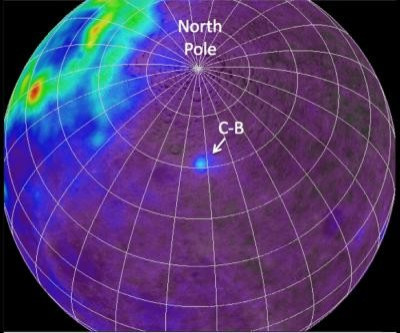NASA Finds Hidden and ?Tantalizing? Volcanic Complex on Moon [PHOTOS]

The NASA Lunar Reconnaissance Orbiter (LRO) has made quite the discovery on the far side of the moon.
In 1998, the LRO first found a ‘bull’s-eye’ concentration of the radioactive thorium, which showed progressively higher concentration from the edge to the center.
More recent images from the LRO now reveal volcanic features in the terrain at the center of the bull’s-eye. The volcanic complex is 25 to 35 km across.
Moreover, it’s not basaltic volcanoes, which are commonly found on the earth and the moon.
Instead, it’s the rarer silicic volcanism, which is unusual because the moon “does not reprocess rock materials in a way that concentrates silica,” said Bradley Jolliff of Washington University in St. Louis, who led the analysis of the LRO images.
These and other results about the volcanic complex, which are presented in “Nature Geoscience,” challenge existing assumption and “offer tantalizing clues to the Moon's thermal history,” stated a Washington University in St. Louis press release. (A link of the press release is here.)
For example, the scientists think the newly-discovered volcanic province is comparatively young due to its lack of craters (formed from asteroid impacts), which may suggest that volcanic activities on the moon, at least on the far side, occurred for longer than previously thought.
Assuming the volcanic area was formed “very late in the game,” it couldn’t have been due to radioactive decay. Instead the following events (Jolliff’s favorite hypothesis) could have caused it:
A pulse of heat from deep in the mantle might melt a pocket of KREEP-rich rock at the base of the crust left by the original crystallization of the magma ocean.
The melt might have risen from the base of the crust to near the surface, inflating the surface in a low dome when it ponded there.
As this lava began to crystallize, it would have differentiated to produce a more silicic melt that was enriched in thorium.
Whatever the cause is (which currently can’t be conclusively determined because scientists don’t have access to the actual rock samples), it’s further evidence that the moon’s geology consists of much than just lunar mare and highlands.
Instead, it's proving to be more diverse and complex than previously thought.
[MUST READ] New Planetary Nebula Discovered [PHOTO]
[MUST READ] Water On Saturn Rained From Its Moon, ESA's Herschel Confirms
© Copyright IBTimes 2024. All rights reserved.





















